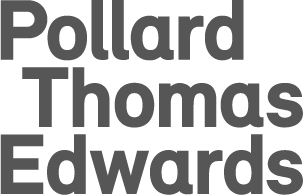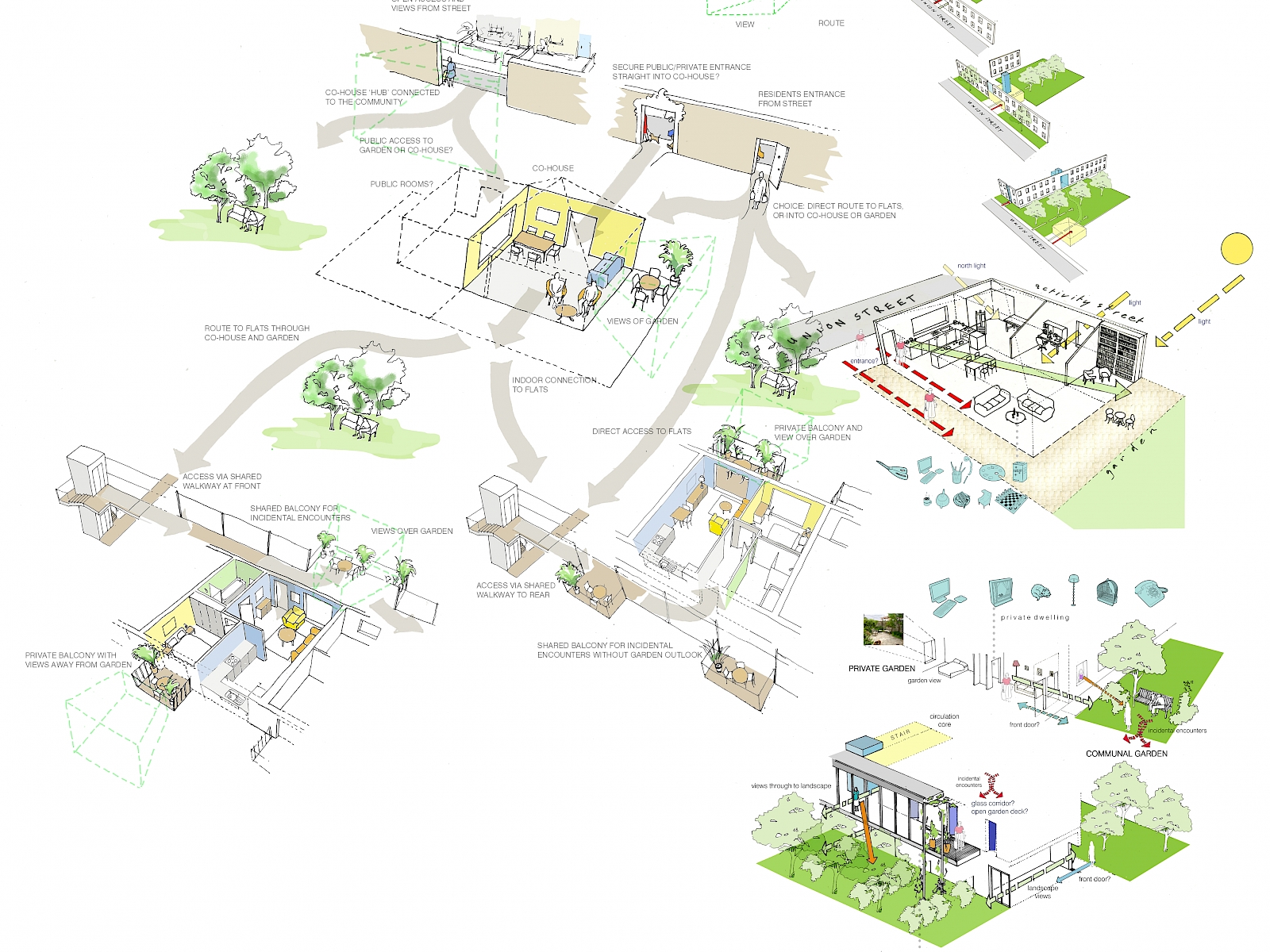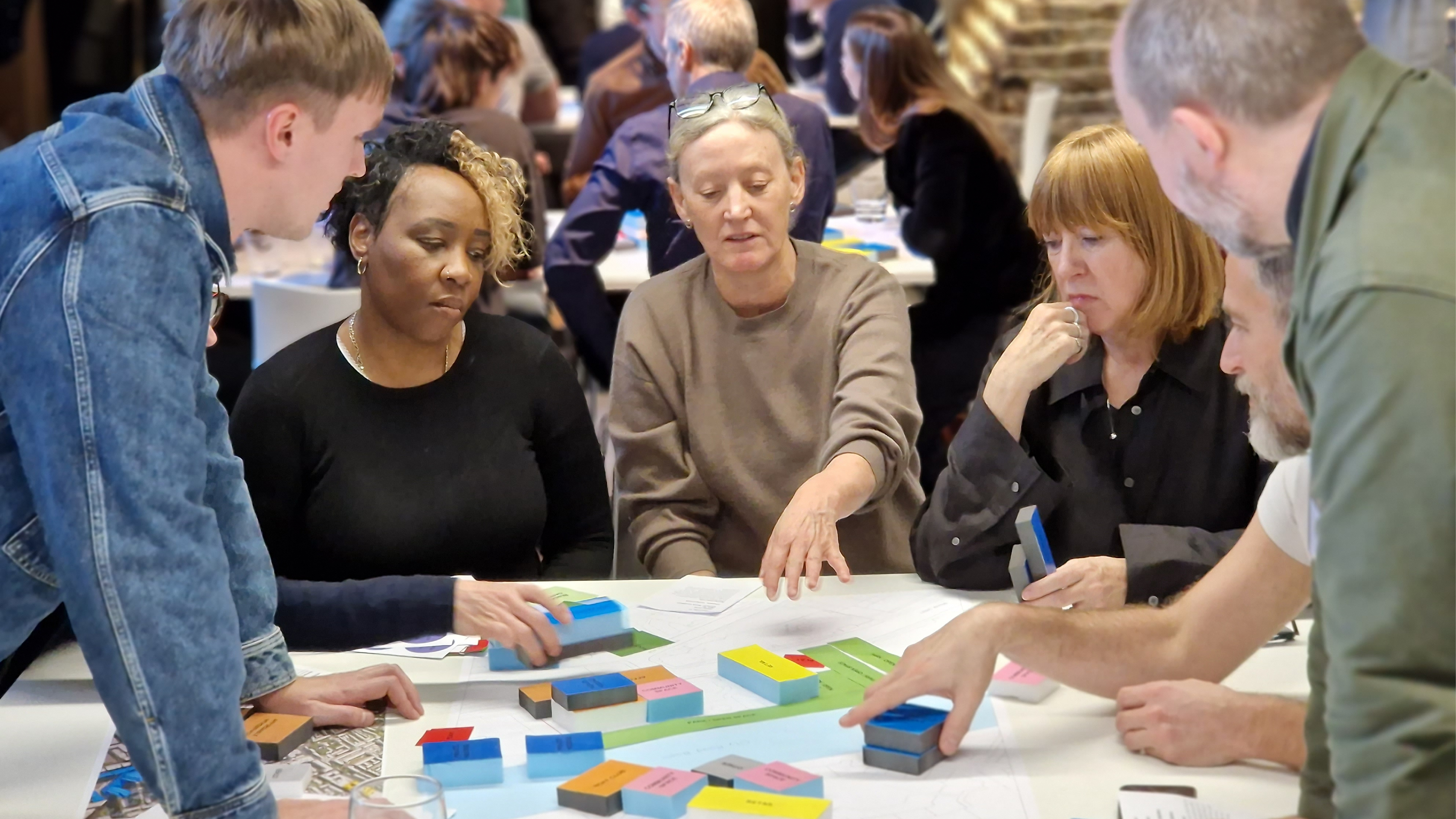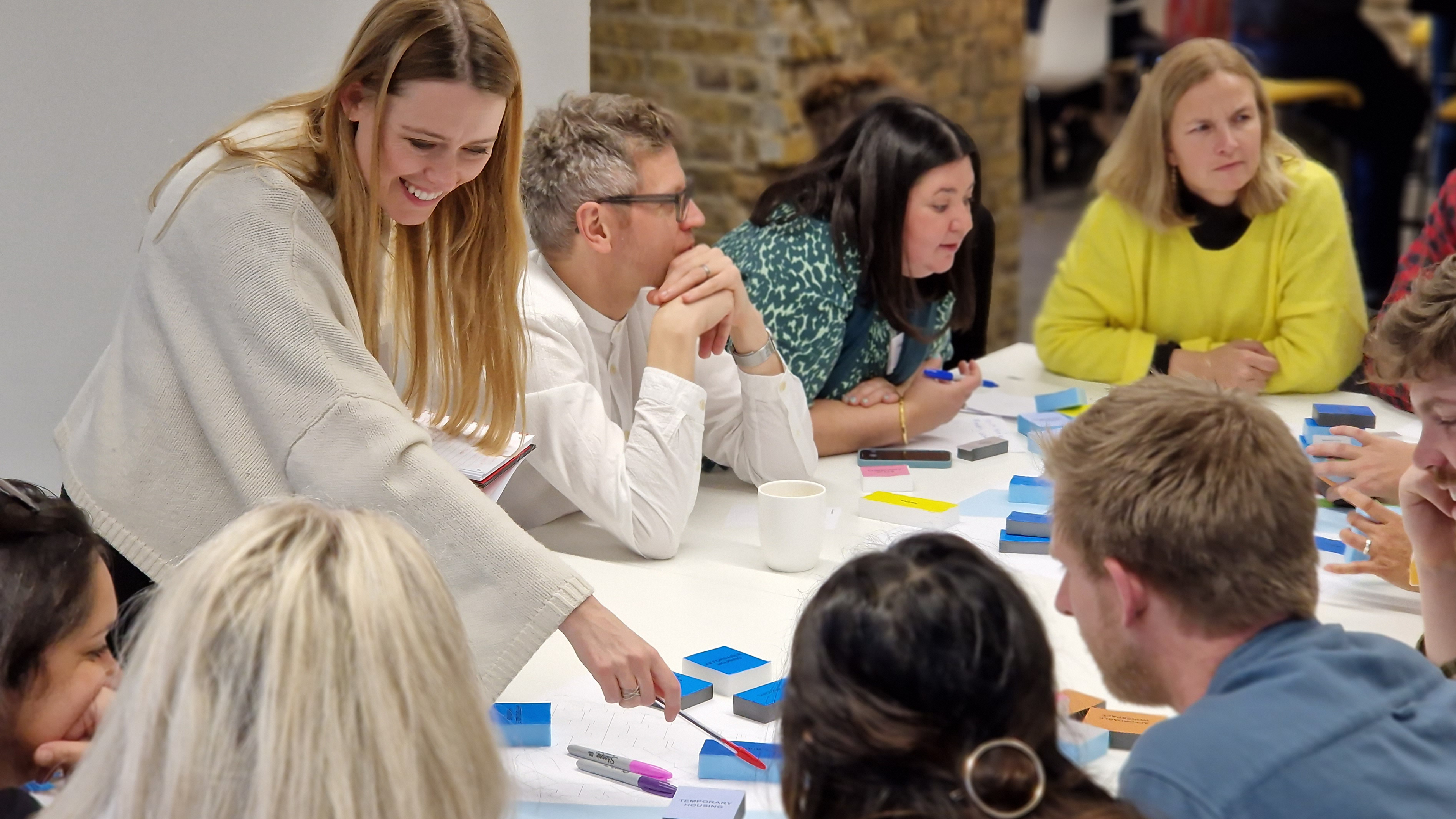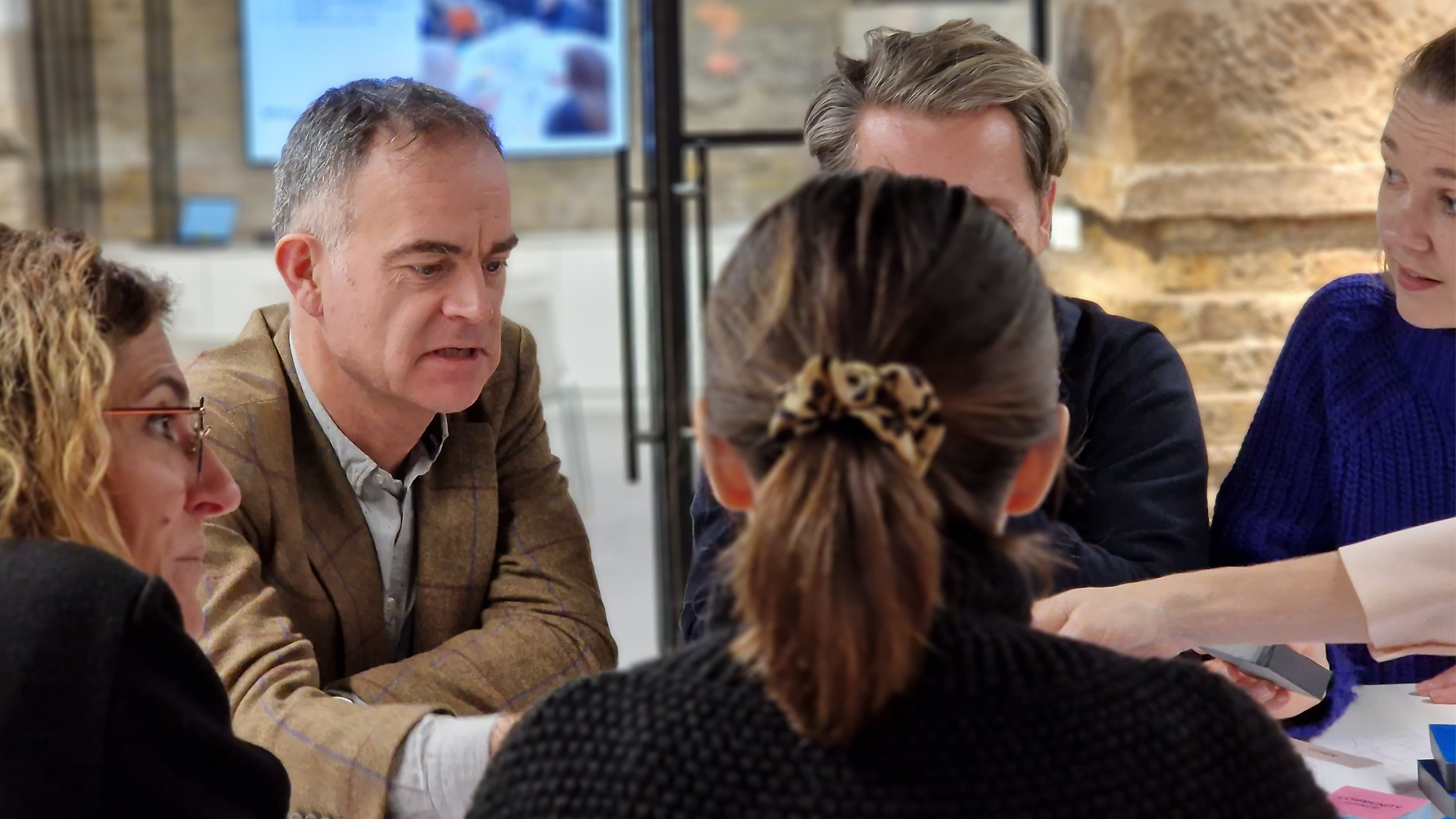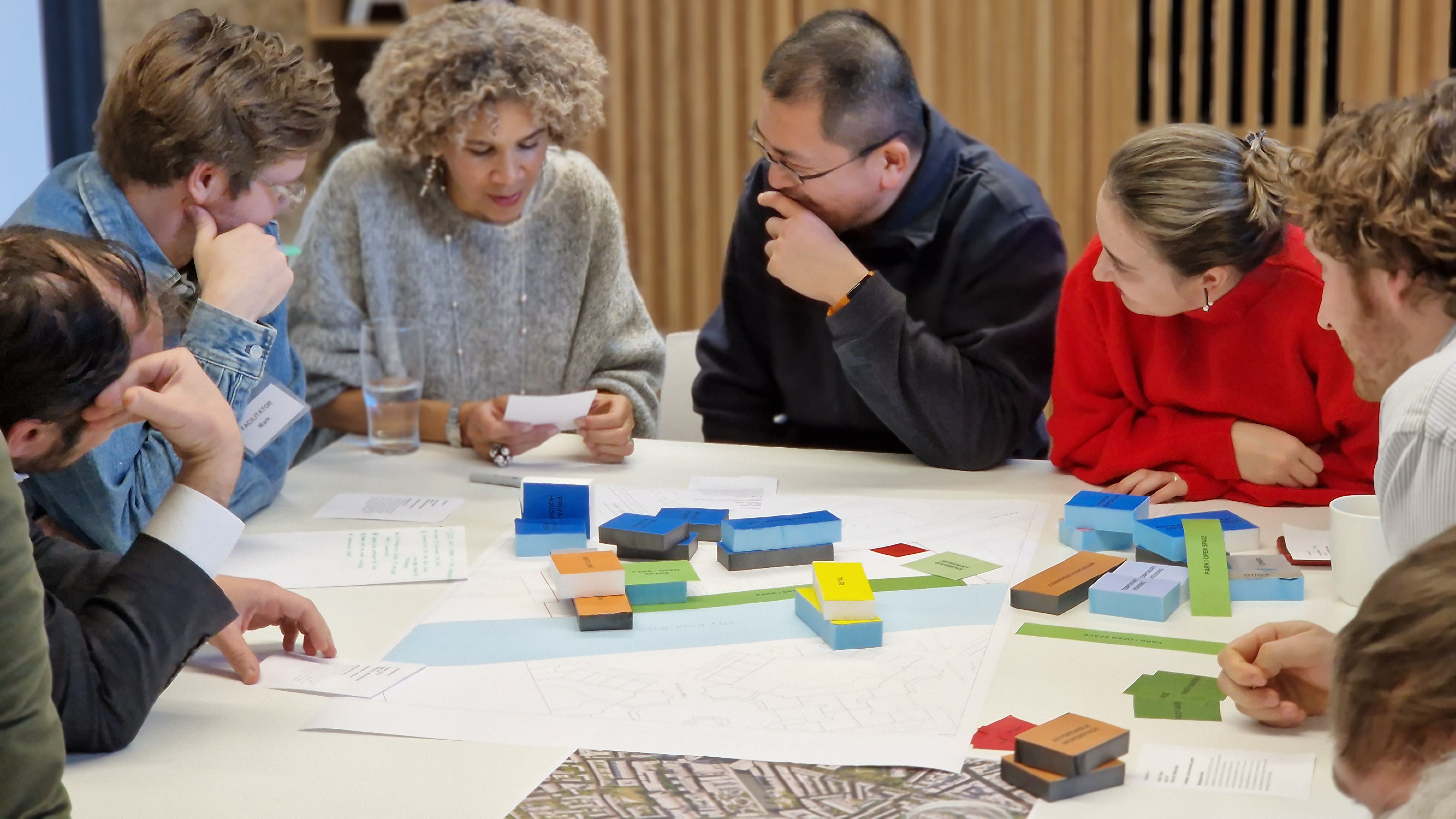Our November conference was all about co-design, co-design, and. . . co-design!
Patrick Devlin introduced the conference day theme of co-design by stating PTE’s core belief -listening to people: whether clients, residents or neighbours. From Frestonia, in the 1980s, where we ‘worked - with no fear! – together with angry squatters to rehouse them in new homes’ to New Ground, a world-leading exemplar in collaborative design. ‘It needn’t be scary,’ said Patrick. ‘Some architects might see co-design as a loss of power and influence but for PTE it means valuing the lived experiences and making decisions with people, not for people.’

PTE Co-designing projects
The first session was a tour of our own work in this still-emerging field – an exploration of how co-design has shaped our projects, at a variety of scales over the years, from a co-living scheme for 25 women to a housing estate providing more than 1,000 new homes.

Simon Whitley kicked off the quick-fire presentations, with an overview of the Packington Estate, a 1970s built estate that PTE and the local residents transformed into a network of new streets and landscaped squares with 800 new homes, some fronting on to the Regent’s Canal, others stitching back into the traditional streets.
Packington has long been recognised for its exemplary resident engagement. As Simon explained, ‘for most, it was the biggest project they’d ever been involved in – so gaining trust from the beginning was crucial.’ This allowed architect and residents to work closely together, from the selection of the design team and the location of affordable homes on the canal to selecting colours and finishes for communal areas.
Words of wisdom: ‘Good snacks at co-design events and sessions? Important!’

Packington Estate, Islington
At King Square, where we worked with residents to provide 140 new mixed-tenure homes alongside enhanced public spaces, and community facilities, Stephen Morris noted that ‘residents’ tacit knowledge was essential to how we replanned the estate,’ with a new east-west route through the public realm, emerging out of the co-design process.
Words of wisdom: “You need to give residents the knowledge and tools to participate in the design process. When we first showed a plan of the community centre, they didn’t realise there were homes above it - because it wasn’t shown on the plan...’

King Square, Islington
Tricia Patel focused on the Alma Estate in Enfield; a 1960s housing scheme demolished to create around 1000 new homes that residents insisted ‘were bigger than before’. They also wanted kitchens to have a window – because, said Tricia, the kitchen was often the most important room in homes throughout the estate. The co-operative culture forged at Alma was strong with residents deciding, with housing officers, how new build homes were allocated as they became available.
Words of wisdom: ‘Measuring existing homes together with the residents gave both parties a better understanding of what kind of homes we should re-provide.’

Alma Estate, Enfield
At Brixton, Mark Ratke said, PTE – designing 240 homes and affordable workspace alongside ‘The Brixton Rec’ - has taken co-design further than ever before, working with specialist Mutual Gain, to connect and work with a community overwhelmed by gentrification concerns. The process was notable for its ‘appreciative inquiry’ – a strengths-based approach to change that emphasises positive idea generation over negative problem identification and a strongly representative resident and businesses group who met for workshops, site visits and visioning sessions.
Words of wisdom: ‘Our co-design approach was initially focused on a new public realm, but we soon realised it had to go further. The client was worried at first – but the end result has been all the better for it.’

Pope’s Road, Brixton
Patrick Devlin concluded with New Ground, and three questions - Where would I like to live in future? What kind of home would I like to grow old in? Who would I like to live with as I get older? – that set the tone for this much-discussed co-designed, co-living project. Working closely with the client - a group of 25 older women who wanted to develop a home each could find comfort in - the process involved understanding the very best co-living projects in Europe and skilling up sessions, so everyone involved, ‘had the same level of knowledge’ and ended with a celebrated co-design exemplar.
Words of wisdom: ‘Co-design doesn’t mean giving up your leadership role as a professional designer: but going on the design journey together with the residents.’

New Ground, Barnet
In the audience debate following presentations, Charina Coronado wondered if clients understand the amount of investment required to enable good design, while Trica Patel said it can all be for nothing, if contractors take ‘short cuts’ once construction is underway, with Sarah Eastman noting that Islington believe in listening to their residents during and after the co-design and engagement processes. Marion MacCormack pointed out that she has used Packington as a co-design exemplar, when setting out on new co-design projects with residents with Leigh Bullimore reminding us that a project’s logistics and the construction programme and sequencing, is as important to residents as design.
Mutual Gain co-design workshop with London Square, Clarion, Inner Circle Consulting, Wates, Stories, Augarde & Partners and the Royal Borough of Greenwich
Susan Ritchie, director of Mutual Gain, introduced the afternoon workshop, explaining the Citizens Assembly co-design model, how it sits within an overall engagement strategy and how to authenticate the process. Brixton resident and co-design participant Nathan Ruttley talked about his co-design journey, from cautious mistrust to a belief that it was a genuine sharing of knowledge and power.
Sarah Eastham then set the scene for the conference workshop, with PTE staff and clients then allocated roles to play: as local residents and businesses feeding into a controversial development in their neighbourhood. The groups and their facilitators moved to their tables, each furnished with site plans and model blocks, where they took on their roles with gusto – challenging, questioning, listening and debating with others – and creating their community focused visions for the workshop ‘site’.
When participants returned, reluctantly, from their tables, it was fascinating to hear the variety of input, the sharing of thoughts and ideas, and the interactions between the different roles.
Nathan noted that understanding that not all people think the same, that their focus can be on different issues, was key to the groups learning to work together and listen to each other.
Thursday at Four panel: Who's afraid of co-design? (we're not)
At the panel discussion at the end of the day, panellists, each of whom attended the afternoon workshop, shared their thoughts and experience of co-design.
Susan Ritchie, said as well as meeting ‘some amazing people,’ co-design processes can ‘help people change their lives’. She added: ‘Think about your purpose first and let techniques follow on’. Reflecting on a co-design project in Redbridge, undertaken with Mutual Gain, Patrick commented that ‘the young people in our group went from mumbling at the back to being very vocal and able to put forward good arguments’.
Richard Meier, co-founder and CEO of developer Stories, wondered, ‘what is the boundary between codesign and consultation?’ and bringing a degree of scepticism to the table, asked, to ‘what degree you articulate the ‘why’ of a project in co-design sessions and questioned whether co-designing techniques cold be thought of as patronising.’
Nathan Ruttley agreed scepticism was important, but having participated in session at Brixton with PTE, insisted it can work if ‘you do whatever you can to get rid of mistrust in the process’.
Sarah Eastman said consultation has an equally useful role to play: ‘in jargon busting and demystifying the planning system.’
Alex Russell, director of Augarde & Partners, said it’s not always about consensus either: ‘One person in a group could have a leftfield idea that could be the most important thing to go with – it’s the job of the facilitator to find that – it’s not consensus but it can be transformative.’
Sarah concluded by saying how important it was to explain from the beginning, ‘what the project parameters are and the level of influence that people will have.’



